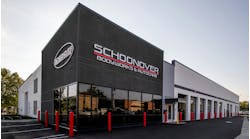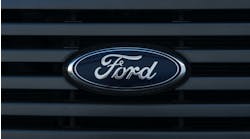Every year, The Romans Group releases a year-long comprehensive report overviewing the state of the North American collision repair marketplace.
In an exclusive interview with FenderBender, Vincent Romans, founder and managing partner of The Romans Group, gave us some insight into his company’s most recent report, “Advancing Our Insights into the 2016 Collision Repair Marketplace.”
The report, which take about a year to culminate its data (typically why it’s a year behind), takes a look at some of the industry’s top trends. And since a number of events have happened during the year it was written (2017), the report also comments on some of those major changes.
Among the several different area the reports hits on, Romans delves into the current state of consolidation in relation to MSOs, a brief overview of the industry and some trends to watch out for in the next few years.The Collision Repair Marketplace
According to Romans, the report segments the industry in a few different ways—first is grouping the “Big 4” MSOs (Romans refers to them as multiple location operators, or MLOs in his report) as one segment, which includes Caliber Collision, Service King, ABRA and The Boyd Group (owner of Gerber Collision && Glass).
Other segments include:
- MSOs pulling in $20 million annually
- A segment grouping the Big 4 and the remaining $20 million-plus operators
- MLNs (multiple location networks) or the four largest franchise companies, three of which are in the U.S. and Canada. CARSTAR, MAACO, ABRA (U.S. only) and Fix Auto
- $10–$19 million MLO (multiple location operator) collision repairers
The report looks at the total market for those segments relative to the total collision repair market size, which the report also estimates and develops each year.
According to the report, the overall collision repair marketplace is worth $35.7 billion—and that’s not including $3.5 billion in the glass market.
For 2016, the Big 4 represented 14 percent of the industry's market share. Next was the other $20 million operators at roughly 11 percent. Finally, $10 million to $19 million operators made up 4.6 percent of the market and franchise markets had the smallest share with 3.7 percent.
The total of the four segments make up about 33 percent, which means the remaining 67 percent of the industry still goes through remaining repairers, Romans says.
The total for those four segments, about 33 percent. Which means, for the rest of the industry, 67 percent still goes through the remaining repairers.
“I do forecast, if those four segments represent 33 percent in 2016, I’d go out and say by 2021 … percent of total market could be as high as 44 percent and then on a more aggressive forecast, almost 50 percent by 2021,” he says.
Consolidation
In 2012, $300 million worth of business was acquired by the Big 4. In 2014, just under a $1 billion was exchanged through MLO acquisitions.
As of November 2017, Romans says that just about $200 million had been acquired for the year, up to date—a huge downward trend overall.
“Consolidation continues, but at a slower pace than in previous years, especially since 2012,” Romans says.
Since 2016, ABRA took a “hiatus” from expanding aggressively, but resumed looking at expanding with minor acquisitions in late 2017.
During that time, Service King, The Boyd Group and Caliber continued to make moves, performing a number of individual shop acquisitions as well as opening new shops.
Future Trends
Romans says that there are short-term, medium-term and long-term trends to watch out for. Here are just a few:
- Increased impact by OEs on where cars get repaired and how they get repaired.
- Between 2018 and 2030, advanced safety and crash avoidance systems will continue to penetrate the car market.
- Over time, accident avoidance systems, especially emergency braking and other autonomous safety features, will have a slow impact on decreasing frequency of accidents and consequently frequency of repairs.
- Between 2020 and 2025, a gradual downslope (not a steep one) of reduced frequency of accidents and repairs will occur. But up until 2020, there will be an increase in vehicle repair, as well as a continued increase in the collision repair market size and vehicles repaired.
- Severity increases because of technology and materials to repair and rising labor costs.




